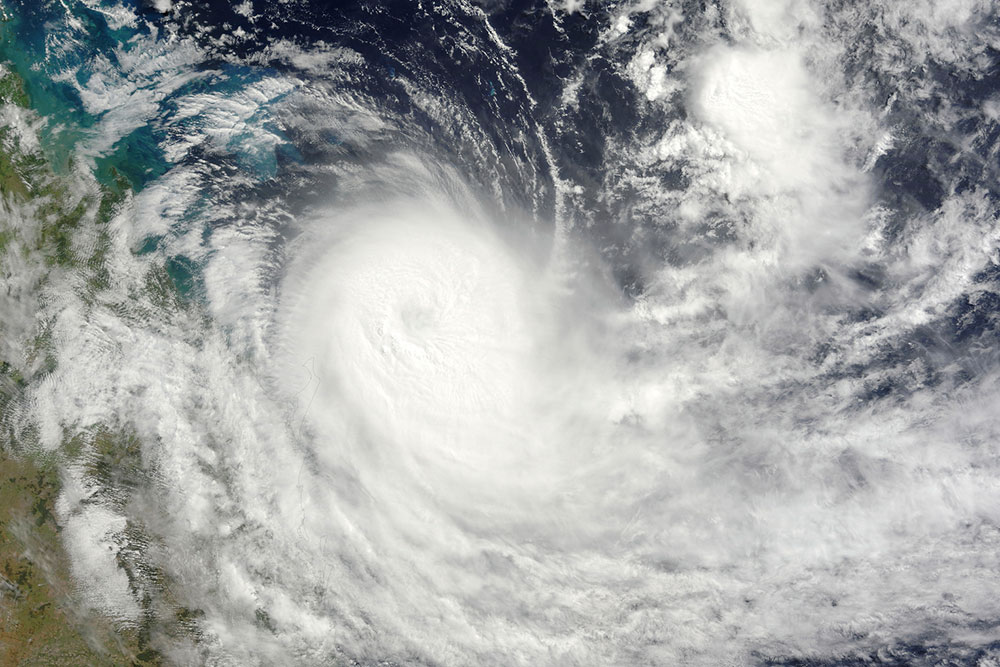How cyclones get their names
Have you ever wondered why cyclones have names and where they come from?

The Bureau of Meteorology names cyclones that form off the Australian coast to help with identification and alerting the public to their threat.
The Bureau names cyclones to raise the profile of the storm systems and avoid confusion if multiple cyclones form simultaneously.
Cyclone names are taken from a list kept by the Bureau, which is arranged alphabetically and alternates between female and male.
The system began in Australia when Cyclone Bessie was named after forming off Western Australia on 6 January 1964.
The first cyclone of the 2022/23 cyclone season, which typically runs from 1 November – 30 April, will be Cyclone Darian.
How to prepare for severe weather
That system will follow Cyclone Charlotte, which formed off Western Australia in March 2022 but did not cross the coast.
After Darian, will be Elly, Freddy, Gabrielle and Herman.
Cyclones that form in other regions and move into Australian waters will carry the name where they were first identified.
For example, Cyclone Yasi, which devastated north Queensland in 2011, was named by the Fiji Meteorological Service after forming 370km north east of Vanuatu.
The Bureau can choose to skip a name on the list if it is felt to be inappropriate at the time.
Neighbouring countries approve our cyclone names through the World Meteorological Organization Regional Tropical Cyclone Committees to avoid any duplication.
The names of high-profile cyclones that cause significant damage and possibly loss of life, like Tracy (1974), Larry (2006) and Debbie (2017), are retired from the list and replaced.
Source: Bureau of Meteorology
Protect your property with RACQ Home Insurance
Related topics
Things to note
The information in this article has been prepared for general information purposes only and is not intended as legal advice or specific advice to any particular person. Any advice contained in the document is general advice, not intended as legal advice or professional advice and does not take into account any person’s particular circumstances. Before acting on anything based on this advice you should consider its appropriateness to you, having regard to your objectives and needs.
Insurance Products (excluding Travel Insurance) are issued by RACQ Insurance Limited ABN 50 009 704 152 (RACQI) and arranged by its agent, RACQ Distribution Services Pty Ltd (RDS) ABN 35 116 361 650, AFSL 567130 and RDS' authorised representatives (including RACQ Operations Pty Ltd ABN 80 009 663 414, AR No. 234978 (RACQO). Conditions, limits and exclusions apply. RDS and RACQO are in the RACQ group of companies. One of the companies in the RACQ group of companies has a minority shareholding in RACQI.
RDS and RACQO have not taken your personal objectives, circumstances or needs into account when preparing advice regarding insurance products and you will need to consider whether the advice is appropriate for you. Read the Product Disclosure Statement (PDS) and any applicable Supplementary PDS before making a purchase decision on this product. You can also access our Target Market Determinations on this website. RDS receives a commission from RACQI for the policies it arranges. RACQO receives fees paid for services it provides to RDS. Further details about remuneration are available on request prior to purchasing.
Banking and loan products issued by Members Banking Group Limited ABN 83 087 651 054 AFSL/Australian credit licence 241195 trading as RACQ Bank. Terms, conditions, fees, charges and lending policies apply. This is general advice only and may not be right for you. This information does not take your personal objectives, circumstances or needs into account. Read the disclosure documents for your selected product or service, including the Financial Services Guide and the Terms and Conditions, and consider if appropriate for you before deciding.
Except for RACQ Bank, any RACQ entity referred to on this page is not an authorised deposit-taking institution for the purposes of the Banking Act 1959 (Cth). That entity’s obligations do not represent deposits or other liabilities of RACQ Bank. RACQ Bank does not guarantee or otherwise provide assurance in respect of the obligations of that entity, unless noted otherwise.
RACQ Bank subscribes to the Customer Owned Banking Code of Practice which establishes higher standards than the law requires. The Code reflects modern consumer expectations and developments in approaches to issues such as consumer vulnerability, guarantors, and supporting customers through financial hardship. Please read our Customer Owned Banking Code of Practice page for more information.
RACQ Operations Pty Ltd (ABN 80 009 663 414 AR 000234978) and Members Travel Group Pty Ltd (ABN 45 144 538 803 AR 000432492) are acting as an Authorised Representative of the issuer of the insurance, Tokio Marine & Nichido Fire Insurance Co., Ltd. (ABN 80 000 438 291 AFSL 246 548). Any advice set out above is general in nature only, and does not take into account your objectives, financial situation or needs. Before purchasing any travel products, please consider the RACQ Travel Insurance Product Disclosure Statement (PDS) and the Target Market Determinations (TMDs) that apply to these products. Whilst the PDS outlines the Terms and Conditions of these products, the TMDs outline the intended class of customers that comprise the target market for these travel products. This will allow you to consider which products best suit your objectives, financial situation and needs and consider the products appropriateness to your personal circumstances. TMDs also outline matters involving the distribution and the review of these products. The PDS, Supplementary PDS and TMDs for each travel product can be found here.
